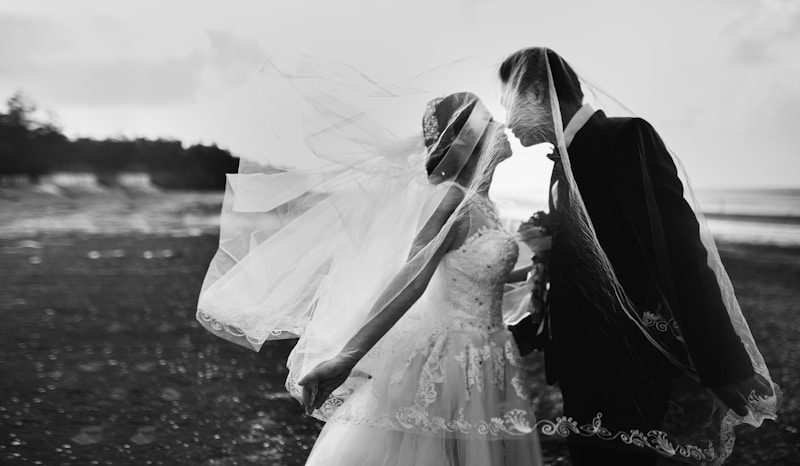Exploring Royal Wedding Ideals: Tradition, Romance, and Modern Influences
The Essence of Royal Weddings
Royal weddings have captivated the public's imagination for centuries, blending age-old traditions with contemporary romance. These splendid ceremonies not only celebrate the union of two individuals but also embody cultural ideals and national identity. In this article, we will delve into the intricacies of royal wedding ideals, examining their historical significance, modern adaptations, and the impact they wield on society and popular culture.
The Historical Significance of Royal Weddings
Throughout history, royal weddings have been instrumental in solidifying political alliances and enhancing the prestige of royal families. From the marriage of Henry VIII and Catherine of Aragon to Prince William and Kate Middleton, each royal wedding carries profound historical weight and societal implications.
| Royal Wedding | Date | Significance |
| Henry VIII & Catherine of Aragon | 1509 | First marriage of a king of England to a Spanish princess, strengthening ties with Spain. |
| Queen Victoria & Prince Albert | 1840 | Established romantic ideals in royal marriages and influenced wedding customs worldwide. |
| Prince Charles & Lady Diana | 1981 | One of the most televised events in history, symbolizing fairy tale romance. |
| Prince Harry & Meghan Markle | 2018 | Highlighted modern values of diversity and inclusion, challenging traditional norms. |
The Traditional vs. Modern Perspectives
Traditionally, royal weddings are steeped in ceremonious rituals—often including elaborate gowns, splendid venues, and public celebrations. However, modern royal weddings reflect changing societal values and expectations. For instance, the wedding of Prince Harry and Meghan Markle introduced a more personal and inclusive atmosphere, showcasing their love story rather than merely a representation of royal expectations.

Key Elements of Royal Wedding Ideals
Several elements encapsulate the essence of royal wedding ideals, including:
1. Extravagance and Opulence
Royal weddings are often characterized by their luxurious ambiance—grand venues, exquisite floral arrangements, and lavish attire. For example, the wedding of Prince William and Kate Middleton took place at Westminster Abbey, adorned with floral displays that captivated millions.
2. Cultural Symbolism
Every royal wedding is a cultural statement. For instance, the use of traditional wedding attire reflects national heritage. The Queen’s garb often incorporates intricate designs that tell stories of the nation’s history.
3. Public Engagement
Royal weddings are major public spectacles, drawing millions of viewers worldwide. The public interest creates a sense of community, enhancing national pride. The spectacular celebrations, such as parades and public viewing parties, embody the collective joy of the nation.
4. Integration of Modern Values
Modern royal weddings often include elements that resonate with contemporary ideals, such as equality, love, and diversity. Meghan Markle’s wedding included a multi-faith ceremony, reflecting the changing dynamics of society and the monarchy's role within it.
Challenges and Criticisms
While royal weddings often seem enchanting, they are not without challenges and criticisms. In recent years, scrutiny has increased regarding the extravagant spending associated with royal weddings amid pressing societal issues such as poverty and healthcare. Critics argue that such opulence seems out of touch with the struggles faced by everyday citizens.
Balancing Tradition and Modernity
Royal families must navigate the delicate balance between preserving tradition and adapting to modern societal expectations. The evolving role of the monarchy, especially with increasing public scrutiny through social media, complicates this balance. Royal weddings must now be mindful of fostering an image that resonates with both tradition and today’s core values.
Conclusion: The Future of Royal Wedding Ideals
Royal wedding ideals represent a unique blend of history, tradition, and modernity. As societies evolve, so too will the ideals surrounding these ceremonies. While extravagance and public curiosity will persist, there is a growing emphasis on authenticity, inclusivity, and cultural representation.
In conclusion, royal weddings will continue to play a significant role in shaping cultural ideals, as they reflect both the past and the future. The blending of tradition with modern values creates a rich tapestry that inspires millions and keeps the spirit of royal weddings alive. If you’re fascinated by royal wedding ideals, consider attending a royal celebration in your country or following upcoming ceremonies digitally to witness the unfolding of these majestic events firsthand.
As we look forward to future royal weddings, let’s remember that they not only symbolize love but also reflect society’s ongoing journey toward acceptance and inclusion. Keep an eye out for how these events evolve, embracing both the past and the promising potential of the future.
Takeaway Tips: When discussing royal wedding ideals, consider the historical context, the traditional versus modern aspects, and the public's perception. Engage with the content by reflecting on what these weddings signify in contemporary society.